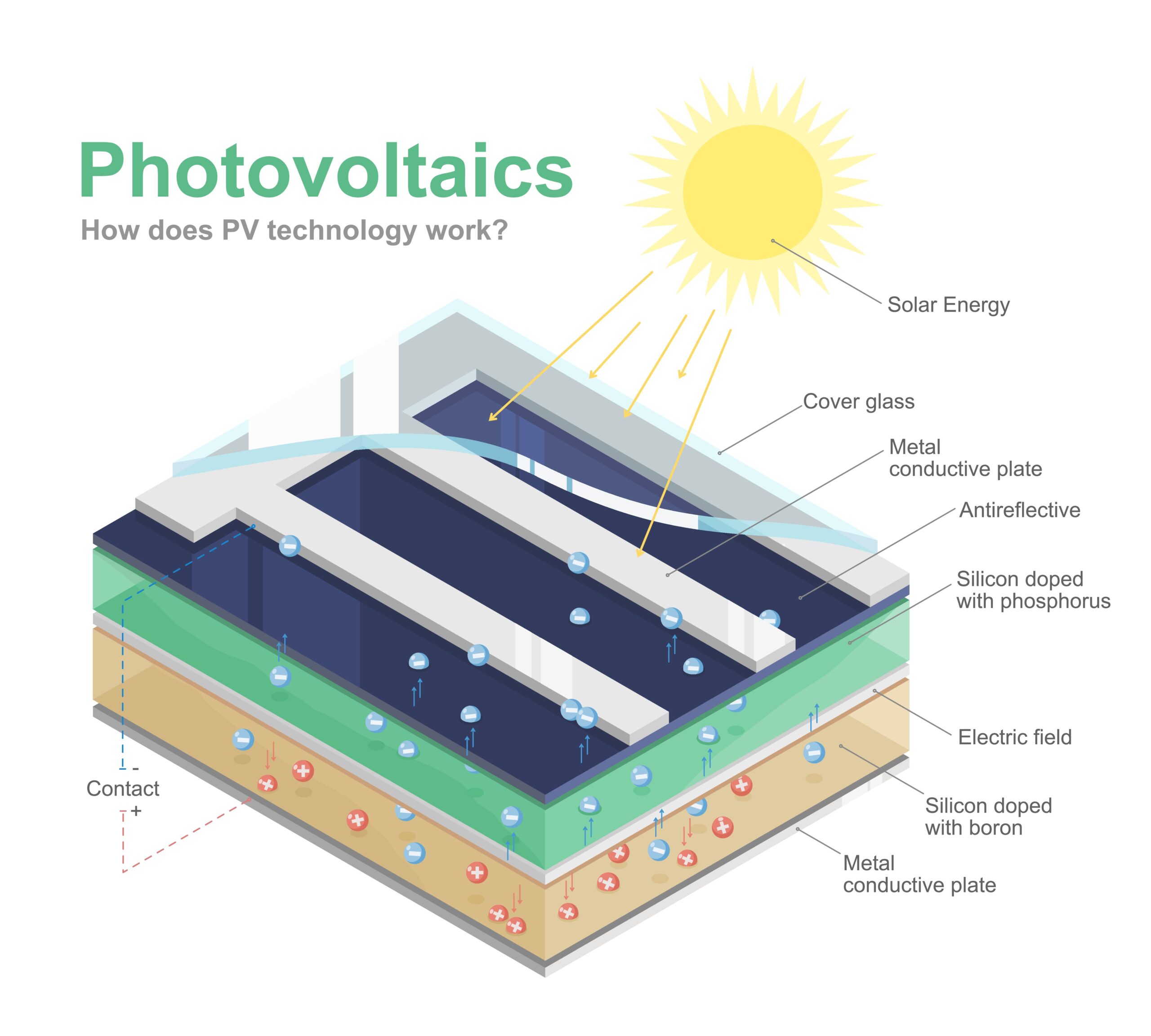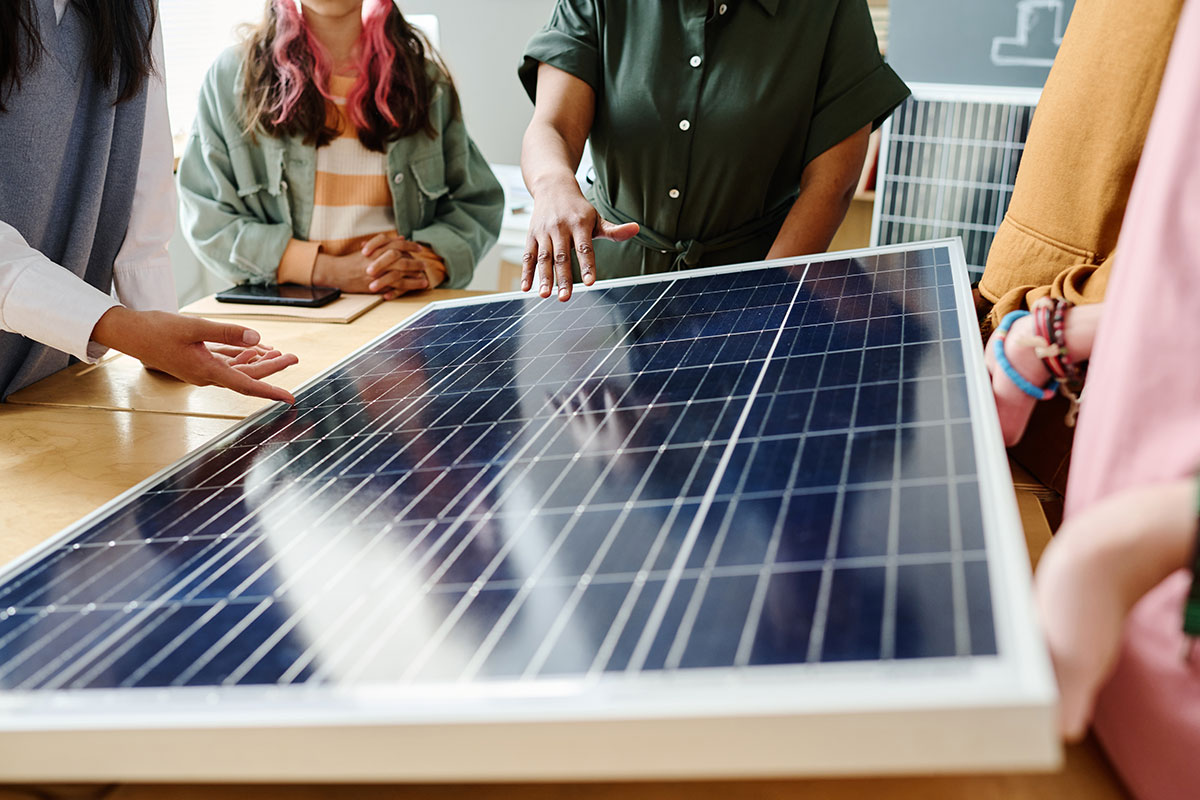Solar panels harness the energy of the sun to convert sunlight into electricity that can be used in your home or business.
This is done through a process called the photovoltaic effect, where sunlight excites electrons that go on to generate an electric current.
A solar panel is made up of multiple components: the solar cells, which are directly responsible for creating electricity, the electrical connections between them, and the frame and glass that hold the cells together.
This guide explains the basics of how solar cells function and how they are combined into solar panels that produce electricity for your home.

Table of Contents
Solar Photovoltaic Cell – The Basics
A solar cell is the foundation of solar PV technology, made from a semiconductor material that converts solar energy into electricity.
A solar cell is made from a conductive material, usually silicon for the majority of solar PV panels currently in use today.
When sunlight strikes the semiconductor in the solar cell it causes electrons to generate an electric current which passes through metallic contacts attached to the cells.
Multiple cells are connected in series to form a solar panel or solar module. Solar panels for residential use typically now consist of 108 solar cells divided into two sections of 54 cells each.
How do solar panels generate electricity?
When sunlight strikes the solar cells in a panel, it creates a flow of energised electrons that generate an electric current as they flow through a circuit.
The electric current generated by the solar panels is in the form of Direct Current (DC), which needs to be converted into Alternating Current (AC) before it can be used.
This is done by the Inverter, an essential component in a solar PV system, which makes the electricity generated usable and regulates its voltage
How much energy is produced by solar panels?
The amount of electricity generated by a solar panel depends on factors such as its efficiency, size, and environmental conditions.
A 440W solar panel is capable of producing 440 Watt Hours of electricity in the space of a single hour under its standard test conditions, though real world conditions will vary from that.
In the space of a day, such a solar panel may produce up to 2.5kWh – 3kWh of electricity during the summer, or 0.5kWh – 1kWh of electricity during the winter.
Break Even in 6 Years
A typical solar installation is fully paid back within 5 – 7 years. All solar panels we recommend are under warranty for 25 years, so you will enjoy at least 18 years of free energy generation.
0% VAT
As of 10 May 2023, the government has removed all VAT on solar installation and solar panel supply. This means solar has never been more affordable!
€1,800 SEAI Grant
There is a range of government grants available for all new solar installations. Our team will guide you through the application process.
How to Maximise Solar Power Output
The best way to get the most power out of your solar panels is to ensure that you are using the right components and that they are optimally installed.
A good solar installer should discuss with customers the best ways to install a solar PV system on their home in order to get the optimal performance from their solar panels.
Other additions, such as a solar battery, may also help to increase the amount of electricity generated by your solar panels which can be used in the home rather than exported to the grid.











